Jesus said to St. Faustina:
You will prepare the world for My final coming. —Divine Mercy in My Soul, Diary, n. 429
If one took this statement in a chronological sense, as an injunction to get ready, as it were, immediately for the Second Coming, it would be false. —POPE BENEDICT XVI, Light of the World, A Conversation with Peter Seewald, p. 180-181
All is Ready Now
Look for a moment at the Timeline image above. See how we are progressing toward the eventual, literal rising of the Sun, who is Jesus Christ Our Lord. But, you've also heard us speak here of Jesus coming for the Era of Peace. What is this seeming "middle coming?" According to the Early Church Fathers, the popes, and a vast body of mystical revelation, it is not the coming of Jesus in the flesh (the heresy of millenarianism) but His indwelling presence in an all new manner. The Era of Peace is the fulfillment of the "Our Father" when His Kingdom will come and will be done "on earth as it is in heaven." In the words of St. Bernard:
We know that there are three comings of the Lord. The third lies between the other two. It is invisible, while the other two are visible. In the first coming, he was seen on earth, dwelling among men… In the final coming all flesh will see the salvation of our God, and they will look on him whom they pierced. The intermediate coming is a hidden one; in it only the elect see the Lord within their own selves, and they are saved. In his first coming Our Lord came in our flesh and in our weakness; in this middle coming he comes in spirit and power; in the final coming he will be seen in glory and majesty… In case someone should think that what we say about this middle coming is sheer invention, listen to what our Lord himself says: If anyone loves me, he will keep my word, and my Father will love him, and we will come to him. —St. Bernard, Liturgy of the Hours, Vol I, p. 169
This idea of a "middle coming" before Christ's final coming in the flesh is no novelty, says Benedict XVI:
Whereas people had previously spoken only of a twofold coming of Christ—once in Bethlehem and again at the end of time—Saint Bernard of Clairvaux spoke of an adventus medius, an intermediate coming, thanks to which he periodically renews His intervention in history. I believe that Bernard’s distinction strikes just the right note… —Light of the World, p.182-183, A Conversation With Peter Seewald
It is the coming of Christ to dwell in His saints; to repeat in them His own interior life in the hypostatic union of His human will with the Divine Will.
…in Christ is realized the right order of all things, the union of heaven and earth, as God the Father intended from the beginning. It is the obedience of God the Son Incarnate which reestablishes, restores, the original communion of man with God and, therefore, peace in the world. His obedience unites once again all things, ‘things in heaven and things on earth.’ —Cardinal Raymond Burke, speech in Rome; May 18th, 2018
And thus, all who "live in the Divine Will" in the Era of Peace will enjoy Christ's indwelling presence in an all new manner as the "Sanctity of sanctities" because He will live His divine life in them.
It is the grace of incarnating Me, of living and growing in your soul, never to leave it, to possess you and to be possessed by you as in one and the same substance. It is I who communicate it to your soul in a compenetration which cannot be comprehended: it is the grace of graces… It is a union of the same nature as that of the union of heaven, except that in paradise the veil which conceals the Divinity disappears… —Blessed Conchita (María Concepción Cabrera Arias de Armida), cited in The Crown and Completion of All Sanctities, by Daniel O’Connor, p. 11-12; nb. Ronda Chervin, Walk with Me, Jesus
It is this "gift of living in the Divine Will" that prepares the Bride of Christ for the Final or "Second Coming" of Jesus, as it is called in Tradition. As St. Paul wrote:
He chose us in him, before the foundation of the world, to be holy and without blemish before him… that he might present to himself the church in splendor, without spot or wrinkle or any such thing, that she might be holy and without blemish. (Eph 1:4, 5:27)
It is the coming of the Kingdom within that makes the Church like the Immaculata, a suitable and beautiful Bride for the Bridegroom, for...
…[Mary] is the most perfect image of freedom and of the liberation of humanity and of the universe. It is to her as Mother and Model that the Church must look in order to understand in its completeness the meaning of her own mission. —POPE JOHN PAUL II, Redemptoris Mater, n. 37
He chose us in him, before the foundation of the world, to be holy and without blemish before him… that he might present to himself the church in splendor, without spot or wrinkle or any such thing, that she might be holy and without blemish. (Eph 1:4, 5:27)
Let us rejoice and be glad and give him glory. For the wedding day of the Lamb has come, his bride has made herself ready. She was allowed to wear a bright, clean linen garment. (Rev 19:7-8)
During the Era of Peace, the divine rights of the children of God are returned; the harmony between man and creation is re-established; and the prayer of Jesus for "one flock" is fulfilled.
"And they shall hear my voice, and there shall be one fold and one shepherd.” May God… shortly bring to fulfillment His prophecy for transforming this consoling vision of the future into a present reality… It is God’s task to bring about this happy hour and to make it known to all… When it does arrive, it will turn out to be a solemn hour, one big with consequences not only for the restoration of the Kingdom of Christ, but for the pacification of… the world. We pray most fervently, and ask others likewise to pray for this much-desired pacification of society. —POPE PIUS XI, Ubi Arcani dei Consilioi “On the Peace of Christ in his Kingdom”, December 23, 1922
The glorious Messiah’s coming is suspended at every moment of history until his recognition by “all Israel”, for “a hardening has come upon part of Israel” in their “unbelief” toward Jesus. —Catechism of the Catholic Church, n. 674
This "pacification" is what the Church Father's called a "sabbath rest" for the Church. Or as St. Irenaeus stated:
…the times of the kingdom, that is, the rest, the hallowed seventh day… These are to take place in the times of the kingdom, that is, upon the seventh day… the true Sabbath of the righteous. —Adversus Haereses, Irenaeus of Lyons, V.33.3.4, The Fathers of the Church, CIMA Publishing Co.
It is the last stage of the Church before the Final Coming of the Lord:
Because this [middle] coming lies between the other two, it is like a road on which we travel from the first coming to the last. In the first, Christ was our redemption; in the last, he will appear as our life; in this middle coming, he is our rest and consolation.…. In his first coming Our Lord came in our flesh and in our weakness; in this middle coming he comes in spirit and power; in the final coming he will be seen in glory and majesty… —St. Bernard, Liturgy of the Hours, Vol I, p. 169
Our Lady, the Great Key
So, in that light, consider the Timeline image above one last time. If the Era of Peace is the "seventh day", then the "eighth day" is eternity, according to Early Church Father, Lactantius:
He shall indeed rest on the seventh day… after giving rest to all things, I will make the beginning of the eighth day, that is, the beginning of another world. —Letter of Barnabas (70-79 A.D.), written by a second century Apostolic Father
So, like any day, it is preceded by a "morning star." In our time, that "morning star" is Our Lady:
Mary, the shining star that announces the Sun. —POPE ST. JOHN PAUL II, Meeting with Young People at Air Base of Cuatro Vientos, Madrid, Spain; May 3rd, 2003; vatican.va
Yet, in the Book of Revelation, Jesus describes himself as the "morning star."[1]Rev 22:16 And He promises this:
To the victor, who keeps to my ways until the end, I will give authority over the nations. He will rule them with an iron rod. Like clay vessels will they be smashed, just as I received authority from my Father. And to him I will give the morning star. (Rev 2:26-28)
The victory, then, for those who faithfully pass through the Great Storm, is the gift of Jesus himself, realized interiorly in what St. John Paul II called a "New and Divine Holiness” or what other mystics refer to as 'the continuous participation in the Trinity’s one eternal operation; the full actualization of the soul’s powers; the sharing in God’s prime motion; the Divine and Eternal Mode of holiness; the greatest sanctity; and the Real Life of Jesus in the soul, etc.' [2]cf. The Crown of Sanctity: On the Revelations of Jesus to Luisa Piccarreta [[pp. 110-111]
Thus comes into full view the "key" and hermeneutic to salvation history: The Virgin Mary is the prototype. She precedes the Church, not only as her mother, but as the image of what the Church is to become: immaculate, holy, one with the Divine Will.
Holy Mary… you became the image of the Church to come… —POPE BENEDICT XVI, Spe Salvi, n.50
What we say of Mary is mirrored in the Church; what we say of the Church is reflected in Mary.
When either is spoken of, the meaning can be understood of both, almost without qualification. —Blessed Isaac of Stella, Liturgy of the Hours, Vol. I, pg. 252
Hence, it is only when the Church herself becomes the Morning Star through a mystical incarnation of her Lord that He will return in the flesh in glory:
The Church, which comprises the elect, is fittingly styled daybreak or dawn… It will be fully day for her when she shines with the perfect brilliance of interior light. —St. Gregory the Great, Pope; Liturgy of the Hours, Vol III, p. 308
The Final Coming
When Jesus comes again, it will be as Bernard said, "in glory and majesty." And it will, this time, be in the flesh:
He comes to judge the living and the dead in the same flesh in which He ascended. —St. Leo the Great, Sermon 74
Christ was last seen on earth in the flesh at His Ascension into Heaven. And the Apostles there present, incapable of removing their gaze from the spot, were instructed by the angels afterward,
Men of Galilee, why do you stand looking into heaven? This Jesus, who was taken up from you into heaven, will come in the same way as you saw him go into heaven. (Acts 1:11)
St. Thomas Aquinas explains,
Although through being sentenced unjustly Christ merited His judiciary power, He will not judge with the appearance of infirmity wherein He was judged unjustly, but under the appearance of glory wherein He ascended to the Father. Hence the place of His ascension is more suitable to the judgment. —Summa Theologica, Supplement to the Third Part. Q 88. Article 4
We must remember that no one knows "that day or hour" (Matthew 24:36). Consequently, the duration of the Era itself that precedes this Final Coming is mysterious. Although one can find a small handful of alleged prophecies regarding the length of the Era in the writings of a few mystics, we are inclined to say that it is safe to consider these predictions as perhaps the pious imaginings of the mystic being confused with an authentic revelation. For, if Heaven were to have revealed the length of the Era, then all the citizens of the Era would be deprived of that overwhelming joy that they will experience each morning, gazing upon the rising of the sun, as they think to themselves "Perhaps tomorrow I shall see not the rising of the sun, but the Coming of the Son Himself whom I so long to see face to face."
When it comes to the events that immediately precede the Final Coming, we are admittedly dealing with enigma. Although a few recent authors—who have put great effort into generating their own attempts at a comprehensive eschatological-speculative system (and in some cases have written lengthy books on the same)—insist that the Final Coming is immediately after the Antichrist (and, if they posit an Era of Peace, they place it before the Antichrist), it has become clear, from the reliable teachings of the Early Church Fathers and the unanimous consensus of the entire modern era of trustworthy private revelation, that this speculation is mistaken.
For this aforementioned consensus that we have laid out above has simply vindicated the clear reading of the Book of Revelation, which too many modern scholars have tried to obscure by insisting on merely symbolic readings of almost its entirety—an approach doomed to fail when applied to any book of Scripture. Thus, to summarize our Timeline: The Warning, Chastisements and the arrival of the Antichrist is imminent. After his reign (and defeat) comes the symbolic "thousand year" reign of Christ, on earth in His Church, in grace. Following is the mysterious explosion of "Gog and Magog" at the end of this reign in what brings the world to an end and ushers in the physical, Final Coming of Christ.
The kingdom will be fulfilled, then, not by a historic triumph of the Church through a progressive ascendancy, but only by God’s victory over the final unleashing of evil, which will cause his Bride to come down from heaven. God’s triumph over the revolt of evil will take the form of the Last Judgment after the final cosmic upheaval of this passing world. —Catechism of the Catholic Church, 677
The old Catholic Encyclopedia summarizes all of its teachings with the following concise statements:
With the fulfilment of the sentence pronounced in the last judgment, the relations and the dealings of the Creator with the creature find their culmination, are explained and justified. The Divine purpose being accomplished, the human race will, as a consequence, attain its final destiny.
Or as Jesus said to Luisa Piccarreta, "Heaven is man's destiny." And with that, Our Lord will call the dead to life so that all those who "died in Him" may experience the glory and transfiguration of their bodies, as our Queen and Mother is in Heaven.
The Last Judgment
If you love Him, you have nothing to fear.
Although everything will be laid bare on Judgment Day—there will be absolutely no more secrets—this is nothing for the just to fear. For, as we know, “All have sinned” (Romans 3:23), and there is no shame in forgiven sin, thus no shame will be felt by the elect when even their darkest hidden sins are revealed; for they will be glad that all souls can rejoice with them in seeing this superabundant exposition of the Divine Mercy.
We conclude this section with a series of quotations from a wonderful book—one which St. Therese of Lisieux herself said was among the “greatest graces of her life”—entitled The End of the Present World and the Mysteries of the Future Life. This book consists in the text of a series of retreats given by Fr. Charles Arminjon in the 19th century, and it shares beautiful teachings on the Final Coming of Christ and the events that go along with His arrival, most especially, God's ultimate glory bestowed upon the body, soul, and spirt, made in His image.
Both St. Athanasius, in his creed, and the Fourth Lateran Council express this truth in terms no less precise and even more explicit: “All men,” they say, “must rise again with the same bodies with which they were united in the present life.”… Such was the unshakable hope of Job. As he sat on his dung-hill, wasted away by putrefaction but with an unruffled countenance and shining eyes, the whole span of the ages flashed through his mind. In an ecstasy of joy he contemplated, in the brightness of the prophetic light, the days when he would shake off the dust of his coffin, and exclaimed, ‘I know that my Redeemer lives… whom I myself shall see; my own eyes, not another’s, shall behold Him.”
This doctrine of the resurrection is the keystone, the pillar, of the whole Christian edifice, the focal point and center of our Faith. Without it there is no redemption, our beliefs and our preaching are futile, and all religion crumbles at the base…
Rationalist writers have declared that this belief in the resurrection was not contained in the Old Testament, and that it dates only from the Gospel. Nothing could be more erroneous… all [the patriarchs and prophets] tremble with joy and hope at the prospect of the promised immortality, and celebrate this new life, which will become theirs beyond the grave, and will have no end. …
The human body, made by His own hands and enlivened by His breath, is the epitome of His marvels, the masterpiece of His wisdom and divine goodness. By the beauty and elegance of its construction, the nobility of its bearing and the splendors that shine through it, the body of man is infinitely superior to all the material beings that have come from the hands of God. It is through the body that the mind reveals its power and exercises its kingship. It is the body, Tertullian says, that is the organ of the divine life and the sacraments. It is the body that is washed by the water of Baptism, so that the soul may obtain its purity and clarity… It is the body that receives the Eucharist and quenches its thirst with divine Blood, so that man, become one with Christ and sharing with Him the same life, may live eternally… Could the body of man… be like the grass in the fields, bursting forth into life for a moment, only to become the prey of worms and the guest of death forever? That would be a blasphemy against Providence and an affront to His infinite goodness…
If you ask why God saw fit to unite, in one and the same creature, two principles so disparate, so different in their essence and properties, as mind and body; why He did not wish man to be, like the angels, a pure spirit, I will reply that God so acted in order that man might be truly the king and epitome of all His works; so that he might, after the manner of Christ, recapitulate in his personality the totality of created elements and beings, so that he might be the center of all things and, by bringing together mind and body, the visible and invisible order, serve as interpreter of both, and offer them simultaneously to the Most High, in his homage and adoration…
…the resurrection will be instantaneous: it will be accomplished in the twinkling of an eye, says St. Paul, in an imperceptible instant, in a flash. The dead, asleep in the slumber of many centuries, will hear the voice of the Creator, and will obey Him as promptly as the elements obeyed Him during the six days [of Creation]. They will shake off the binding-clothes of their age-long night and free themselves from the grip of death, with greater nimbleness than a sleeping man awakening with a start. Just as, of old, Christ came forth from His tomb with the speed of lightning, cast off His shroud in an instant, had the sealed stone of His sepulcher lifted aside by an angel, and hurled the guards, half-dead with fright, to the ground, so, says Isaiah, in an equally imperceptible space of time, death will be cast forth…
Ocean and land will open up their depths to eject their victims, just as the whale that had swallowed up Jonah opened its jaws to throw him out on the shore of Tharsis. Then human beings, free, like Lazarus, of the bonds of death, will rush transfigured into a new life, and will insult the cruel enemy that had felt sure it would keep them fettered in endless captivity. They will say, “O death, where is your victory? O death, where is your sting?”…
The resurrection will be a grand, imposing spectacle that will surpass all those ever seen on earth, and eclipsing even the solemnity of the first creation…
With the resurrection accomplished, the immediate consequence is the judgment, which will take place without delay… The general judgment is a certain fact, announced by the prophets; it is a truth that Jesus Christ constantly stresses, a truth ratified by reason and consonant with the law of conscience and every idea of equity….
This judgment is rightly called universal because it will be exercised over all members of the human race, because it will cover every crime, every misdemeanor, and because it will be definitive and irrevocable… there will be no more distinction of wealth, birth, or rank… the victories of great captains, the works conceived by genius, the enterprises and great discoveries will be deemed mere shams and child’s play…
What He has said, He will fulfill; what He has done, He will confirm. What He once desired will remain eternally fixed, for heaven and earth will pass away, but the Word of God will not be subject to any error or change…
If God is silent and seems at this moment to be asleep, He will unfailingly awaken in His own time… If the most solemn hearing of all has been adjourned, it is for a short period only…
… all wicked men, the pamphleteers of free-thought, the instigators of unjust laws, those who violate the honor and liberty of the family, and the rights and virtue of children; but that those men who defy God and deride His threats will one day have a minute and rigorous account to render to His justice… is an absolutely certain truth… and, sooner or later, they will settle that account. On the day of solemn reparation, the wicked who called the just fools, who glutted themselves on their tortures and tears, like starving men devour bread, will learn to their cost that God does not suffer Himself to be mocked… —taken from portions of pages 78-106
The end. Or, rather, the beginning… of eternity.

 Alicja Lenczewska
Alicja Lenczewska

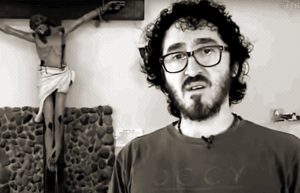
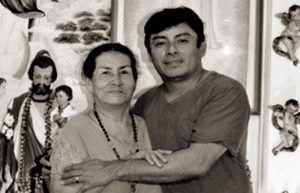
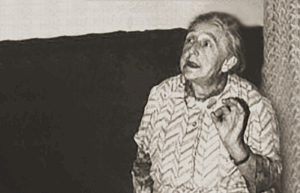 Elizabeth Kindelmann
Elizabeth Kindelmann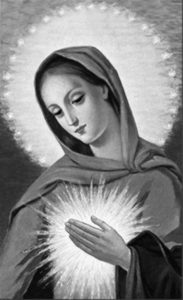 Through what became The Spiritual Diary, Jesus and Mary taught Elizabeth, and they continue to instruct the faithful in the divine art of suffering for the salvation of souls. Tasks are assigned for each day of the week, which involve prayer, fasting, and night vigils, with beautiful promises attached to them, laced with special graces for priests and the souls in purgatory. In their messages, Jesus and Mary say that The Flame of Love of the Immaculate Heart of Mary is the greatest grace given to mankind since the Incarnation. And in the not-so-distant future, her flame will engulf the entire world.
Through what became The Spiritual Diary, Jesus and Mary taught Elizabeth, and they continue to instruct the faithful in the divine art of suffering for the salvation of souls. Tasks are assigned for each day of the week, which involve prayer, fasting, and night vigils, with beautiful promises attached to them, laced with special graces for priests and the souls in purgatory. In their messages, Jesus and Mary say that The Flame of Love of the Immaculate Heart of Mary is the greatest grace given to mankind since the Incarnation. And in the not-so-distant future, her flame will engulf the entire world.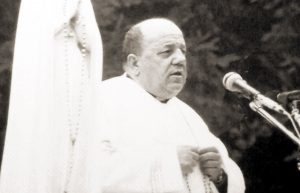 Father Stefano Gobbi
Father Stefano Gobbi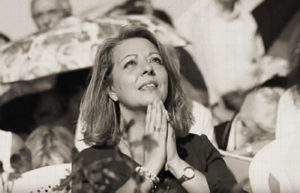 Why Gisella Cardia?
Why Gisella Cardia?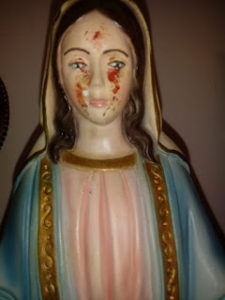 Thirdly, the messages have frequently been accompanied by visible phenomena, photographic evidence found in In Cammino con Maria, which cannot be the fruit of subjective imagination, notably the presence of the stigmata on Giselle’s body and and the appearance of crosses or religious texts in blood on Gisella’s arms. See the pictures taken from her apparition website
Thirdly, the messages have frequently been accompanied by visible phenomena, photographic evidence found in In Cammino con Maria, which cannot be the fruit of subjective imagination, notably the presence of the stigmata on Giselle’s body and and the appearance of crosses or religious texts in blood on Gisella’s arms. See the pictures taken from her apparition website 
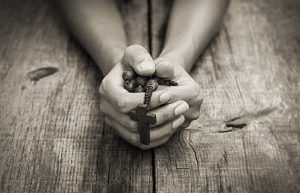 Jennifer
Jennifer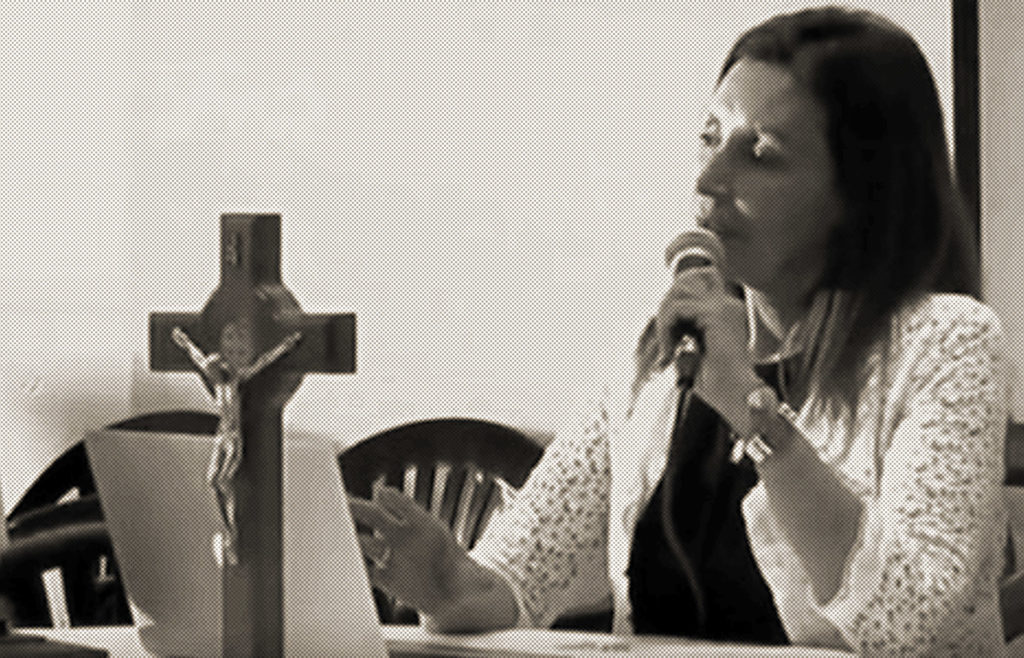
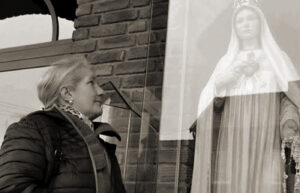 Why Manuela Strack?
Why Manuela Strack?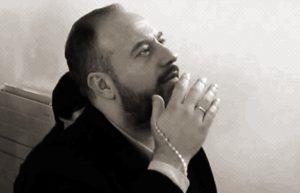

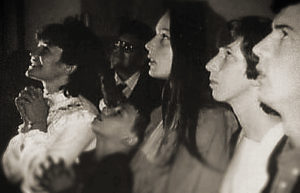 Why the Visionaries of Our Lady of Medjugorje?
Why the Visionaries of Our Lady of Medjugorje?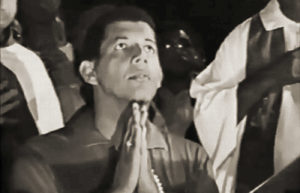 Why Pedro Regis?
Why Pedro Regis?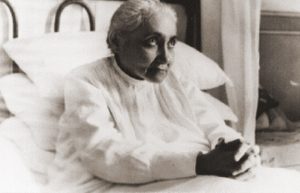 Why the Servant of God Luisa Piccarreta?
Why the Servant of God Luisa Piccarreta?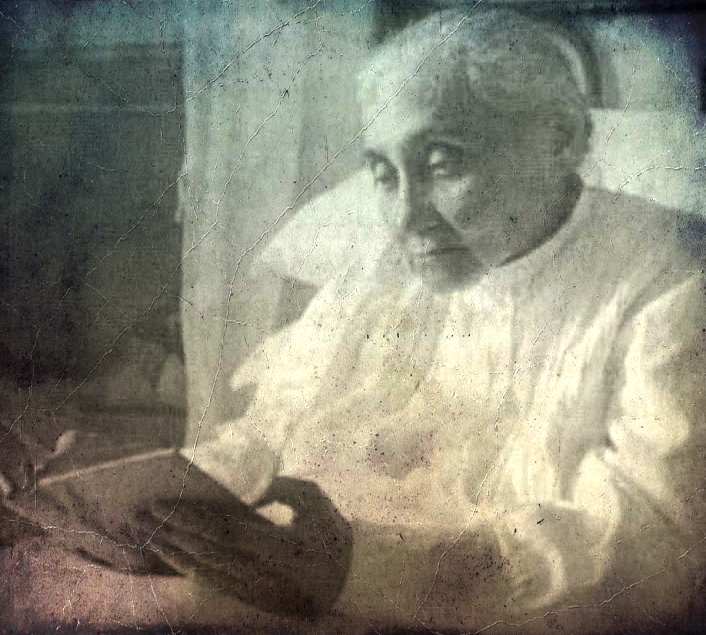 of the saints. It wasn’t until she became a “Daughter of Mary” that the nightmares finally ceased at the age of eleven. In the following year, Jesus began to speak interiorly to her especially after receiving Holy Communion. When she was thirteen, He appeared to her in a vision that she witnessed from the balcony of her home. There, in the street below, she saw a crowd and armed soldiers leading three prisoners; she recognized Jesus as one of them. When He arrived beneath her balcony, He raised his head and cried out: “Soul, help Me!” Deeply moved, Luisa offered herself from that day on as a victim soul in expiation for the sins of mankind.
of the saints. It wasn’t until she became a “Daughter of Mary” that the nightmares finally ceased at the age of eleven. In the following year, Jesus began to speak interiorly to her especially after receiving Holy Communion. When she was thirteen, He appeared to her in a vision that she witnessed from the balcony of her home. There, in the street below, she saw a crowd and armed soldiers leading three prisoners; she recognized Jesus as one of them. When He arrived beneath her balcony, He raised his head and cried out: “Soul, help Me!” Deeply moved, Luisa offered herself from that day on as a victim soul in expiation for the sins of mankind.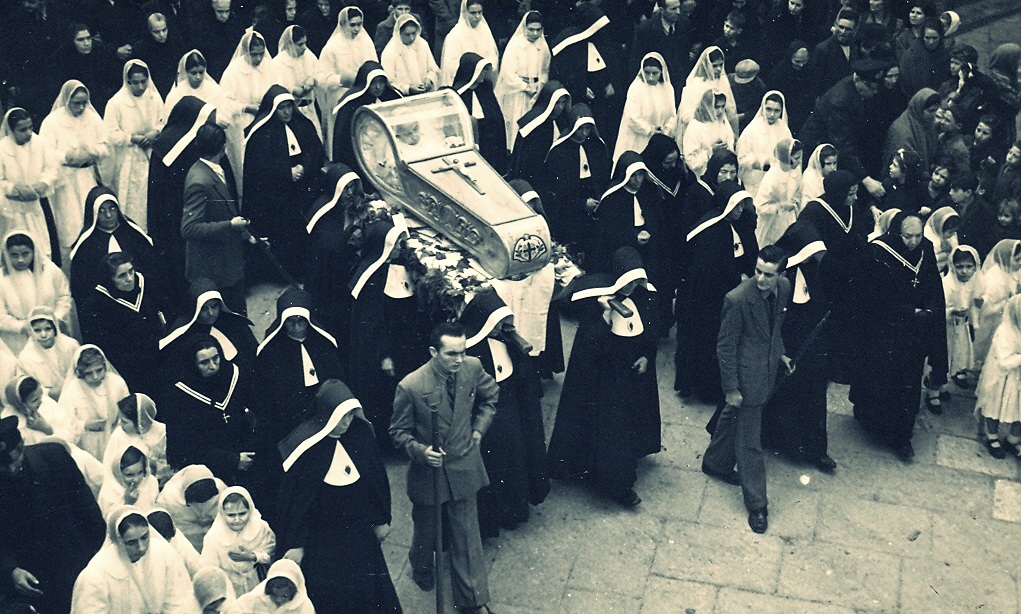 immobile, rigid-like state that appeared almost as if she were dead. It was only when a priest made the sign of the Cross over her body that Luisa regained her faculties. This remarkable mystical state persisted until her death in 1947—followed by a funeral that was no little affair. During that period in her life, she suffered no physical illness (until she succumbed to pneumonia at the end) and she never experienced bedsores, despite being confined to her little bed for sixty-four years.
immobile, rigid-like state that appeared almost as if she were dead. It was only when a priest made the sign of the Cross over her body that Luisa regained her faculties. This remarkable mystical state persisted until her death in 1947—followed by a funeral that was no little affair. During that period in her life, she suffered no physical illness (until she succumbed to pneumonia at the end) and she never experienced bedsores, despite being confined to her little bed for sixty-four years.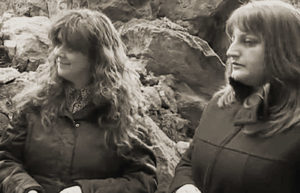 Why Simona and Angela?
Why Simona and Angela?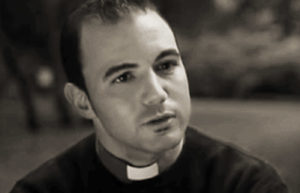
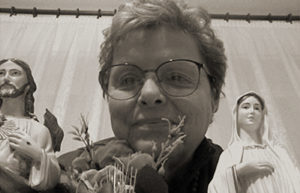 Valeria Copponi
Valeria Copponi